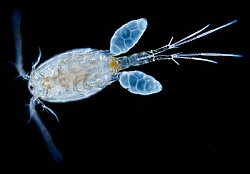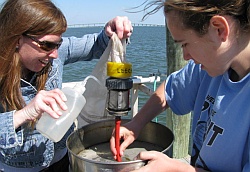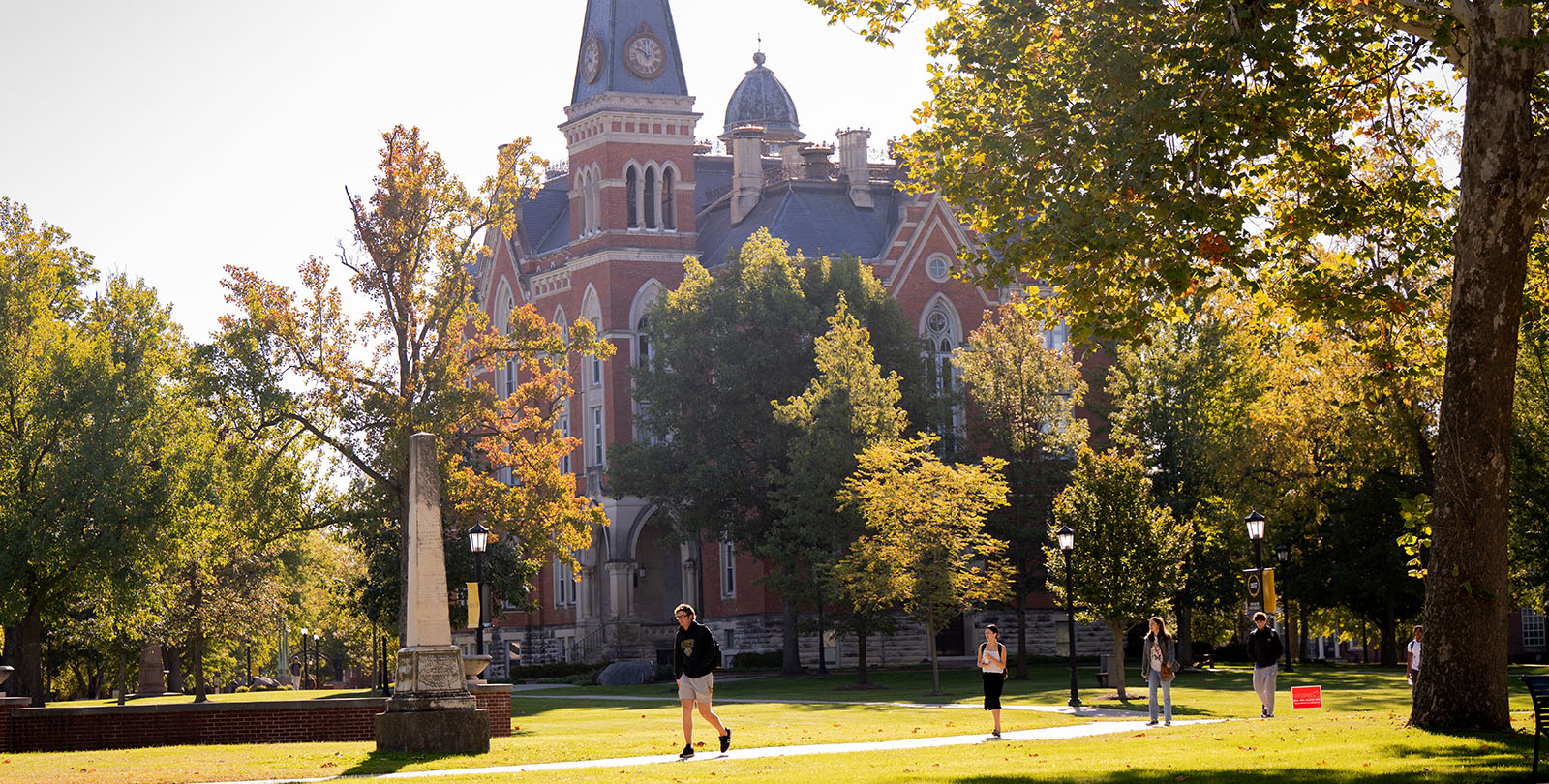Professor Dina M. Leech
April 16, 2010
 To larger aquatic creatures, copepods are either food or something your food eats. Of the thousands of species of the tiny zooplankton -- ranging from docile algae eaters, to vicious carnivores known to eat their own young -- few grow to be much longer than the head of a nail. And Assistant Professor of Biology Dina M. Leech loves them all.
To larger aquatic creatures, copepods are either food or something your food eats. Of the thousands of species of the tiny zooplankton -- ranging from docile algae eaters, to vicious carnivores known to eat their own young -- few grow to be much longer than the head of a nail. And Assistant Professor of Biology Dina M. Leech loves them all.
Leech first discovered the world of the copepod as a biology student at James Madison University. What began as curiosity developed into a full-blown scientific interest that continues to this day.
"At first I thought they were cute," Leech recalls. "I mean, just saying the word copepod makes you smile, right? ... The more I learned about their life history and ecology, the more fascinated I became. In particular, their diel [daily] vertical migration behaviors still intrigue me, and many other biologists, today."
Many species of copepods make a daily migration between different depths in the water, ranging from tens of meters up to 100 meters on a single trip. It's a fairly rigorous habit to have, considering their size, and scientists such as Leech have been busy figuring out why they do it. Casting off these migrations as unimportant would be easy if copepods weren't such an important link in the underwater food chain. Copepods eat phytoplankton such as algae, preventing huge algal blooms from killing off larger species -- an ecologist's or aquarium keeper's nightmare. In turn, they are also a major food source for larger, zooplankton-eating species in the ocean. Understanding their behavior is a major step towards understanding the delicate ecology of the aquatic world.
 After receiving her Ph.D. in environmental sciences from Lehigh University in 2001, Leech (pictured, left) spent eight years as a postdoctoral researcher at Duke University, the University of North Carolina-Chapel Hill and the UNC Institute of Marine Sciences. She arrived at DePauw in 2009 knowing that Indiana's aquatic resources would be much different from those in North Carolina, but soon turned her attention to the quarry ponds that freckle the region, dovetailing her interests as an aquatic ecologist and environmental scientist.
After receiving her Ph.D. in environmental sciences from Lehigh University in 2001, Leech (pictured, left) spent eight years as a postdoctoral researcher at Duke University, the University of North Carolina-Chapel Hill and the UNC Institute of Marine Sciences. She arrived at DePauw in 2009 knowing that Indiana's aquatic resources would be much different from those in North Carolina, but soon turned her attention to the quarry ponds that freckle the region, dovetailing her interests as an aquatic ecologist and environmental scientist.
"I had primarily worked in more commonly thought of aquatic systems, such as estuaries, rivers, and lakes," Leech says. "These systems were created by natural processes at least 10,000 years ago, and then subsequently impacted by human disturbance in recent geological time.
"Quarry ponds, on the other hand, originated from a dramatic human disturbance -- namely strip mining -- so their physical, chemical, and biological properties likely differ from natural systems. ... Not much research has been conducted in quarry ponds despite their prevalence in the landscape in certain parts of the world, including Indiana. I really don't know what to expect to find, and that's exciting and challenging to me."
Last year, when seniors Morgan E. Grant and Cody J.K. Roldan proposed a research project in the pond at the DePauw Nature Park -- a long-abandoned quarry -- their professor directed them to Leech. Under her guidance, Grant and Roldan examined the effects of sediment re-suspension on zooplankton populations in the quarry pond. In other words, how the pond's tiny inhabitants would be affected by human activities such as boating or swimming.
 "We set up many different aquariums with sediment, water and zooplankton samples taken from the quarry," Grant says. "We stirred up the sediment several times a week according to our treatment variables, and measured zooplankton populations, water parameters -- temperature, pH, conductivity and dissolved oxygen -- and chlorophyll concentrations each week to see how mixing the sediment caused them to change."
"We set up many different aquariums with sediment, water and zooplankton samples taken from the quarry," Grant says. "We stirred up the sediment several times a week according to our treatment variables, and measured zooplankton populations, water parameters -- temperature, pH, conductivity and dissolved oxygen -- and chlorophyll concentrations each week to see how mixing the sediment caused them to change."
They found that increased activity in the pond would come at the expense of reduced species diversity within it, thus limiting the pond as a scientific resource.
In her short time here, Leech has found other uses for the Nature Park pond, as well. During the winter, she and students in an aquatic ecology course drilled through the pond's ice ceiling to sample zooplankton and algae in the water below. She says that these sorts of excursions with engaged students have been the best part of her new focus as a teacher.
"I think what I have liked most about teaching about DePauw are the small classes and the positive interactions they facilitate," Leech says. "I love that I know the name of each one of my students. I love that many of them -- past and present -- e-mail me news articles that pertain to material we have discussed in class. It's great to see that many DePauw students are mindful of the world around them, and it challenges me to be a better educator."
